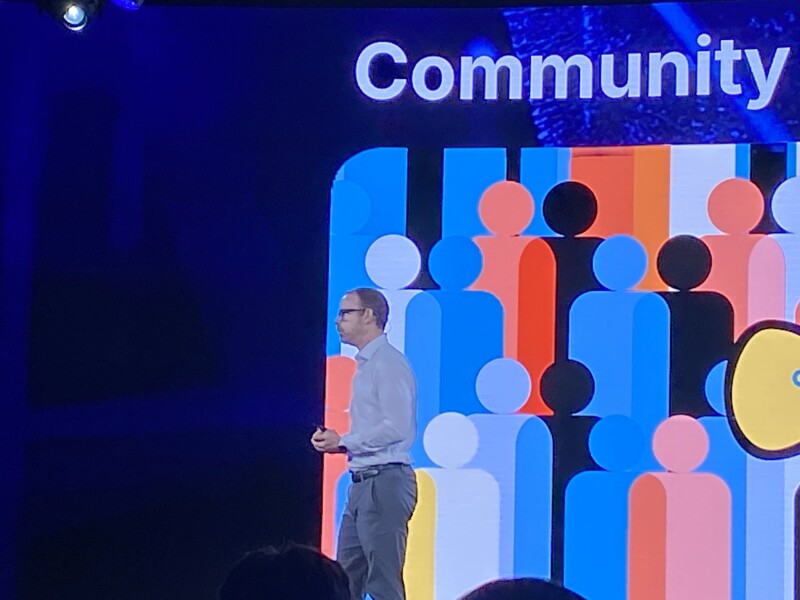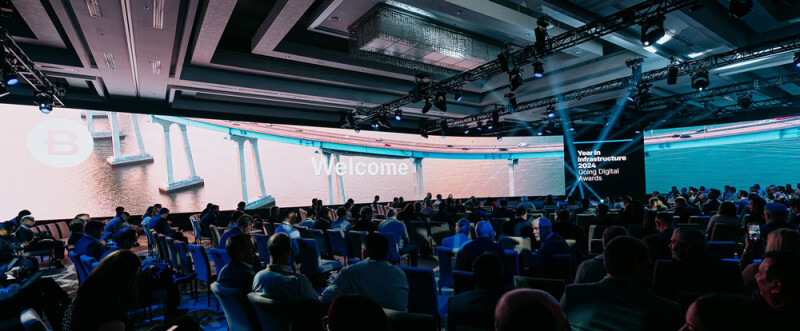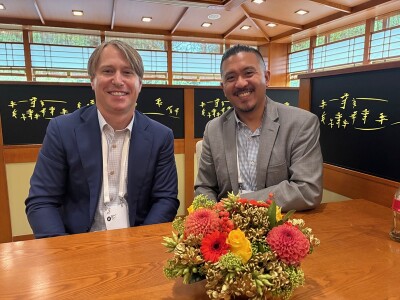Leaders from some of the most innovative and prolific infrastructure firms came together last week in Vancouver, Canada for the annual Year in Infrastructure event, put on by Bentley Systems. The two-day event includes the company’s annual Going Digital Awards, given out in 12 categories highlighting some of the most impressive uses of Bentley technology in infrastructure projects all around the world. In addition to the finalist presentations and winner announcements, Bentley also takes the opportunity to share with its users and members of the press some of their latest announcements and improvements to their products and platform.
Yesterday, we covered some of our biggest takeaways from being in attendance for the Year in Infrastructure, which happened to come during the 40th anniversary of the company’s founding and also marked the 20th edition of the Going Digital Awards. In that rundown, however, we failed to mention one of the big themes of the week, which was the company’s acquisition earlier this year of 3D geospatial company Cesium.
While the acquisition was made official in the beginning of September, this event served as something of a welcoming to the Bentley family for Cesium, and the latter’s founder and former CEO – and now Bentley’s Chief Platform Officer – Patrick Cozzi had a chance to address the attendees in a morning presentation on the second day of the event. Later that day, Geo Week News had the chance to speak with Cozzi about the acquisition, how he envisions Cesium and Bentley’s digital twin platform, iTwin, coming together, and the shared commitment he and his new company have around creating an open ecosystem.
For the presentation, which came in the midst of many of Bentley’s executives talking about their respective divisions, Cozzi really leaned into introducing himself and Cesium to his new customer base. That turned out to be the right move, as he asked at one point how many people in the audience had heard of Cesium, and how many had used the platform. Roughly one-third and one-quarter of the audience, respectively, responded in the affirmative to the questions. Cozzi discussed his path to this point, noting that he started in the aerospace industry before finding Cesium’s niche in geospatial, and now moving more toward infrastructure.
It’s something that he tells Geo Week News he’s been noticing since even before this acquisition was coming. He said, “We’ve been getting so much community pull to combine the natural and built environments. If you just go to the Cesium website and look at all of the user stories that are published on our blog, most of them now over the last year or two have a combination of built and natural environments.”

That move into infrastructure even includes some aspects that one wouldn’t necessarily think of right away, including Cesium’s recently announced Cesium Moon Terrain product, bringing 3D Tiles to the moon and allowing for simulation and other use cases with this data. As he outlined in his presentation, organizations around the world are more interested than ever in potentially building infrastructure on the Moon, and this is the exact kind of product that would be able to assist with this.
Cozzi tells Geo Week News that Cesium Moon Tiles coming out right before this acquisition was a coincidence, but that it’s “coincidence that shows how the natural and built environments are coming together, and how maybe aerospace and infrastructure are coming together.”
Regarding the acquisition itself, the move came as a bit of a surprise to many in the industry, and Cozzi himself says that Cesium wasn’t really on the market for an acquisition, per se. Instead, he tells Geo Week News that his mission running the company has always been, “How do we go the farthest, the fastest?”
He believes that joining Bentley is the path to doing just that, and this belief comes from many years of knowing the company. Both Cesium and Bentley are from the Philadelphia area, and Cozzi notes that they’ve known each other for about eight years at this point, but that the conversations around a potential acquisition came together relatively quickly, within the last year.
The biggest thing that came up in our conversation, though, was the alignment between Cesium and Bentley on what the future of these industries is going to look like, and specifically the importance of an open ecosystem. Cozzi noted in his presentation, in fact, that Cesium’s open source availability is how Bentley first became aware of the platform, and openness was generally one of the biggest talking points throughout the two-day event.
When asked why he chose to join Bentley rather than, for example, opt for a strategic partnership and join the two platforms together more informally, Cozzi pointed to their “joint vision.”
“Take 3D Tiles,” Cozzi said. “[Bentley CTO] Julien [Moutte] and I first started talking about it, and Julien was rattling off ideas. What do you think about this and that? I’m like, Yeah, I mean that is basically the roadmap for the next three years. I feel like now, [with the acquisition], Cesium has just this incredible reach.”
For now, Cozzi is largely running Cesium as he had been pre-acquisition before he transitions more fully into his new role. In the meantime, he is learning all about the new company and its platform and products. He described excitement as being a “beginner” again in many aspects of his role, and says that he sees this experience as being able to relive his growth at Cesium at a new, larger scale.
When asked some of the impressions he got from his experience at Year in Infrastructure, Cozzi said, “What I like is the depth that I’ve seen and how deep each individual field goes, whether it’s roads, or bridges, or dams, and knowing that we can bring that geospatial context.”





